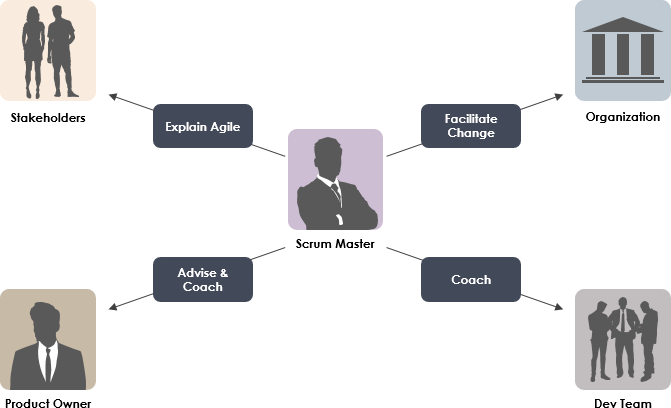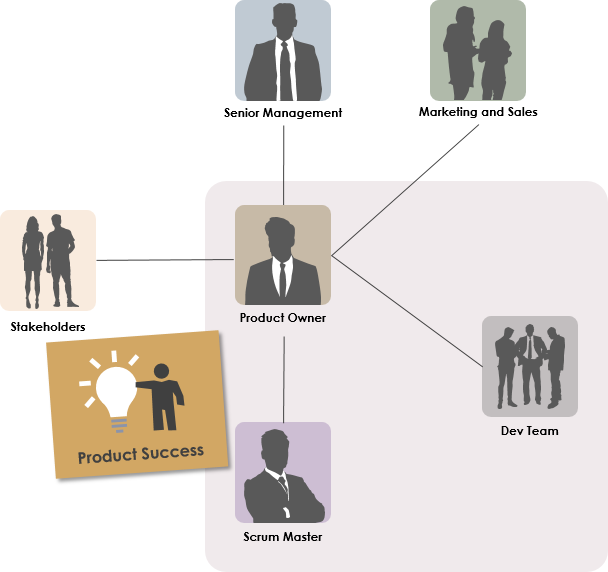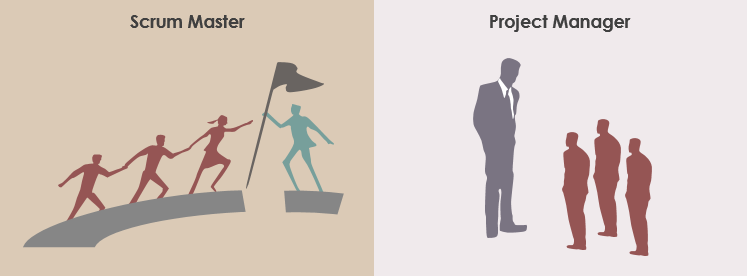Navigating the Agile Landscape: Project Manager vs Scrum Master vs Project Owner
Introduction
In the dynamic realm of project management, distinct roles like Project Manager, Scrum Master, and Project Owner play pivotal roles, each contributing uniquely to the success of a project. For newcomers to Agile methodologies, the differences between these roles might not be immediately apparent, but understanding their nuances is crucial for effective collaboration and project delivery.
Project Manager vs Scrum Master vs Project Owner
Role of Project Manager: The traditional Project Manager is a linchpin in project execution, responsible for overseeing the entire project life cycle. Key responsibilities include defining project scope, gathering requirements, managing resources and budgets, reporting progress to business leadership, and ensuring overall project quality. The Project Manager is a process-oriented leader, allocating tasks, prioritizing features, and managing risks to meet project objectives.

Role of Scrum Master: Contrastingly, the Scrum Master operates in an Agile environment, where adaptability and collaboration are paramount. The Scrum Master doesn’t manage the team but serves as a facilitator and coach, ensuring adherence to Scrum processes. Their responsibilities include leading Sprint Planning, organizing daily Scrum meetings, coaching the Product Owner, monitoring sprint progress, and fostering continuous communication. The Scrum Master acts as the glue that holds the team together, focusing on team dynamics and motivation.

Role of Product Owner: The Product Owner shoulders the responsibility of maintaining a product backlog aligned with business requirements. As the project evolves, the Product Owner adjusts and reprioritizes the backlog to accommodate changes in the product, customer needs, or market dynamics. They convey a clear vision of the project, manage and prioritize the product backlog, ensure the development team understands tasks, and provide feedback on work results.

Differences Between Project Manager and Scrum Master
In the context of Agile methodologies, the roles of Project Manager and Scrum Master differ significantly. While a Project Manager manages timelines, resources, and scope to meet business requirements, a Scrum Master focuses on ensuring the Scrum team’s success. The Product Owner collaborates with the customer and team to set project direction, while the Scrum Master coaches the development team in executing Agile practices.

Scrum Master vs Project Manager: It’s crucial to note that there is a time and place for both Project Managers and Scrum Masters in large projects. Project Managers can cover multiple teams, coordinating efforts and collaborating with dependent teams. They play a crucial role in aligning multiple teams towards project timelines and resource utilization. On the other hand, Scrum Masters operate within the Agile framework, ensuring that the development team can work seamlessly without impediments and that Scrum practices are effectively implemented.
Let’s break down the comparison of Project Manager, Scrum Master, and Product Owner across various aspects in a tabular format:
| Aspect | Project Manager | Scrum Master | Product Owner |
|---|---|---|---|
| Leadership Style | Authoritative and directive | Servant leadership and facilitative | Visionary and authoritative |
| Responsibilities | – Define project scope | – Lead Sprint Planning | – Convey a clear vision of the project |
| – Gather requirements | – Organize daily Scrum Meeting | – Manage and prioritize product backlog | |
| – Manage resources and budget | – Coach the Product Owner | – Ensure development team understands tasks | |
| – Report to business leadership | – Monitor the progress of the sprint | – Provide feedback and sign off work results | |
| – Focus on process | – Help team estimate and increase velocity | – Adjust backlog based on changing requirements | |
| – Allocate tasks | – Promote continuous communication | ||
| – Prioritize features | – Reduce team disruptions | ||
| – Ensure quality | – Monitor and improve team dynamics | ||
| – Manage vendors | – Assist with Reporting | ||
| – Manage risk | – Motivate the team | ||
| Team Interaction | Directs and assigns tasks to the team | Facilitates and coaches the development team | Collaborates with the development team |
| Focus | Project objectives and business requirements | Scrum process and team success | Product vision and changing project requirements |
| Decision Making | Centralized decision-making authority | Facilitates team decision-making | Collaborative decision-making with the team |
| Communication Style | Top-down communication | Facilitative and open communication | Collaborative communication with stakeholders |
| Adaptability | Adapts to changing project requirements | Promotes adaptability within Scrum framework | Adapts product backlog to changing requirements |
| Project Lifecycle | Traditional project management methodologies | Agile/Scrum framework | Agile/Scrum framework |
| Accountability | Accountable for overall project success | Accountable for Scrum process implementation | Accountable for maintaining product backlog |
This table provides a snapshot of the key differences in roles, responsibilities, and approaches of Project Managers, Scrum Masters, and Product Owners across various aspects of project management and development.
Conclusion
In the intricate web of project management, understanding the distinct roles of Project Managers, Scrum Masters, and Product Owners is essential for success. Each role brings a unique set of skills and responsibilities to the table, contributing to the overall efficiency and effectiveness of project delivery. As organizations embrace Agile methodologies, recognizing and leveraging these roles can make the difference between a project’s success and failure in today’s fast-paced and ever-evolving business landscape.
Scrum Management Software
Visual Paradigm Scrum Canvas is a valuable tool that streamlines the management of Scrum projects, ensuring a smooth flow from the project’s inception to its final delivery. The Visual Paradigm Scrum Process Canvas stands out as an effective Scrum framework tool designed to enhance the efficiency and collaboration of agile teams. Let’s explore the key features and benefits of this Scrum tool:

1. Comprehensive Scrum Project Management:
- Single Canvas: The Scrum Process Canvas consolidates the entire Scrum project management process into a single, visually intuitive canvas.
- End-to-End Visibility: Seamlessly navigate through every phase of the Scrum process, from project vision identification to the delivery of the final product.
2. Enhanced Scrum Activities:
- Efficient Execution: Perform Scrum activities quickly and easily within the canvas, promoting a more efficient workflow.
- Engagement: Keep the entire team fully engaged through a user-friendly interface, fostering collaboration and participation.
3. Agile Software Simplicity:
- Simplicity in Agile Projects: The agile software embedded in the Scrum Canvas simplifies the complexities of managing agile projects.
- Effective Project Management: Make agile projects simple and effective by utilizing a tool that understands and supports the dynamic nature of agile methodologies.
4. Visual Representation:
- Beautiful Design: The Scrum Process Canvas boasts a beautifully designed interface, enhancing the visual representation of the project’s progress and status.
- Intuitive Navigation: Visualize the Scrum process flow intuitively, making it easy for team members to understand and contribute effectively.
5. Team Engagement:
- Collaboration: Facilitate collaboration among team members by providing a centralized platform for Scrum activities.
- Accessibility: Ensure that the entire team can actively participate in Scrum processes, regardless of their role or location.
6. Project Vision and Delivery:
- Project Vision Identification: Aid in identifying and communicating the project vision clearly, aligning all team members with the overarching goals.
- Delivery Focus: Maintain a focus on final product delivery, helping teams adhere to project timelines and meet customer expectations.
7. Agile Project Simplicity:
- Agile Methodology Support: Tailored to support the principles of Agile methodologies, ensuring flexibility and adaptability to changing project requirements.
- User-Friendly Interface: A user-friendly interface promotes a straightforward approach to managing complex agile projects.
The Visual Paradigm Scrum Process Canvas serves as a powerful Scrum framework tool, providing a unified platform for efficient project management. Its user-friendly design, comprehensive features, and focus on team engagement make it an essential asset for any organization adopting Scrum methodologies. With this tool, the journey from project vision to final product delivery becomes not only manageable but also visually compelling and collaborative.

